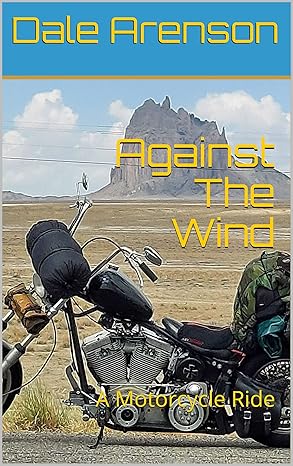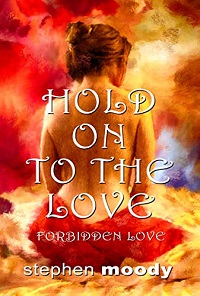*Against the Wind: A Motorcycle Ride* is a memoir by Dale Arenson, published in August 2021, chronicling a solo motorcycle journey across America’s backroads. The narrative follows Arenson, a former outlaw biker turned airline pilot and author, as he rides an old-school chopper with a small fuel tank to a Hangmen Motorcycle Club reunion. Opting for two-lane highways and avoiding major interstates, he navigates through rural landscapes, encountering challenges like scarce gas stations, closed restaurants, and unpredictable weather. The trip, spanning hundreds of miles, is less about high adventure and more about the quiet joys and struggles of the open road—freedom, solitude, and the tactile thrill of riding against the wind. Along the way, Arenson reflects on his past, reliving memories of his tumultuous life as a 1% biker in Southern California during the 1960s and 70s, juxtaposed against his present-day self, now older and wiser but still drawn to the motorcycle’s raw simplicity. The book blends vivid descriptions of the journey with introspective moments, offering readers a front-seat view of both the physical ride and the author’s personal evolution.
Additional Info
Dale Arenson’s writing style, as seen in his memoirs like *Against the Wind*, *Hangmen: Riding with an Outlaw Motorcycle Club in the Old Days* and *Better Lucky Than Good*, is vivid, immersive, and narrative-driven, drawing readers into his unconventional life with a raw, unfiltered voice. His ability to blend gritty personal experiences with a reflective tone and a knack for storytelling invites comparison to several accomplished authors, particularly those he admires and those who share similar stylistic strengths. Arenson explicitly cites Ernest Hemingway, Plato, and Marcus Aurelius as influences, and Hemingway’s impact is especially evident. Like Hemingway, Arenson employs a straightforward, economical prose style that cuts to the essence of his experiences—whether it’s the thrill of riding with the Hangmen Motorcycle Club or the tension of piloting a plane. Both writers favor a masculine, action-oriented narrative that conveys deeper truths about resilience and identity without over-embellishment. Arenson’s depiction of his outlaw biker days, for instance, echoes Hemingway’s ability to capture the camaraderie and danger of tight-knit groups, as seen in works like *The Sun Also Rises* or *For Whom the Bell Tolls*. Another apt comparison is Hunter S. Thompson, whose gonzo journalism in *Hell’s Angels: A Strange and Terrible Saga* parallels Arenson’s insider perspective on motorcycle culture. Both writers dive headfirst into subcultures, offering unvarnished accounts that blend humor, chaos, and introspection. Arenson’s wild anecdotes—like run-ins with the law or near-death escapades—resemble Thompson’s visceral, larger-than-life storytelling, though Arenson leans more toward memoir than Thompson’s blend of fact and fiction. In the aviation realm, Arenson’s work evokes Ernest K. Gann, a celebrated aviation writer known for *Fate Is the Hunter*. Readers have noted Arenson’s ability to “plop you down in the right seat” of the cockpit, much like Gann, whose detailed yet gripping narratives make the reader feel the stakes of every flight. Both authors transform technical experiences into high-stakes adventures, balancing adrenaline with moments of quiet reflection. Lastly, there’s a trace of Jack London in Arenson’s tales of self-reinvention and rugged individualism. London’s *The Call of the Wild* and *Martin Eden* explore characters forging their paths against the odds, much like Arenson’s journey from a high-school dropout and outlaw biker to a commercial pilot and world-champion rifle shooter. Both writers celebrate the grit and freedom of the untamed spirit. Arenson’s writing most resembles Hemingway for its clarity and stoic undertones, Thompson for its raw energy, Gann for its aviation immersion, and London for its arc of personal triumph. His unique voice—rooted in lived experience and polished by his admiration for literary giants—sets him apart while aligning him with these masters of narrative craft.






Reviews
There are no reviews yet.